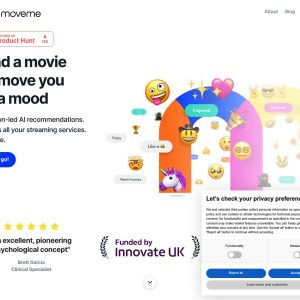Harness the Potential of AI Tools with ChatGPT. Our blog offers comprehensive insights into the world of AI technology, showcasing the latest advancements and practical applications facilitated by ChatGPT’s intelligent capabilities.
Adobe unveiled major new AI capabilities at its annual MAX conference, highlighting how generative … [+]
Adobe unveiled major new AI capabilities at its annual MAX conference, highlighting how generative AI continues to evolve creative workflows. The announcements aim to balance using AI to simplify tasks while keeping human ingenuity at the core.
In an exclusive one-on-one interview conducted at MAX, Govind Balakrishnan, senior vice president for Adobe Express and Digital Media Services, reveals how the company is prioritizing seamless integration of AI creativity tools across its apps suite to strengthen human creativity and collaboration.
Balakrishnan provides insights into major updates to Express, Adobe’s strategy to lower barriers to AI adoption, and how new capabilities aim to complement professionals through frictionless workflows.
He also discusses how Adobe leverages its legacy strengths rather than fixating on competitors as it brings Creative Cloud features into its expanding Express platform, in this Q&A.
An interview with Govind Balakrishnan, Senior Vice President at Adobe, Express and Digital Media Services
This interview has been edited for brevity and clarity.
As SVP for the Express Product Group and Digital Media Services group at Adobe, Govind Balakrishnan … [+]
Johan: Adobe Express received major updates at MAX this year. Can you give me an overview of the new capabilities and what stands out as the most revolutionary? What are some of your favorite new features?
Govind: We completely rewrote and relaunched Adobe Express in August to ensure it is deeply integrated with Creative Cloud. The ability to bring in assets from Creative Cloud and have edits flow seamlessly between the applications is a huge benefit, especially for collaboration between creatives and marketers.
Some of my favorite new generative AI capabilities are text-to-image with Firefly, generative fill to replace parts of an image, and text effects to transform text into different visual styles. The goal is to eventually have generated templates include animated and video elements.
The text recommendations based on your content and images are also great for helping people pick fonts. And modifying text is one of the hardest things to get right in design, so being able to turn text into shapes, objects, and effects is really powerful.
Johan: Do you think the average 13 year old today will just use tools like Express for creative work, rather than learning Photoshop or Premiere Pro?
Govind: I don’t see Express fully replacing Photoshop. It gives everyone a starting point, but the journey has endless possibilities depending on your skill level. Express dramatically lowers the barrier to entry. But you can graduate to different Creative Cloud apps for more advanced capabilities, thanks to our deep connections between the products. The bridges from Express allow endless creativity.
Johan: What opportunities does Express provide for long-time Creative Cloud users?
Govind: Experienced creatives can now take their work further in Express through animation, video, and interactivity. Things you couldn’t do previously in Illustrator or Photoshop. It allows them to elevate their creative skills without learning new tools.
Express also saves them time on repetitive non-creative tasks, like resizing and reformatting for different formats and channels. This gives them more time to focus on storytelling and creativity.
Johan: As you know, social media is evolving. More brands are looking to create TikToks, Instagram Reels and YouTube Shorts. How do you respond to competitors like CapCut and YouTube Create focused on short-form video creation?
Govind: Our integration with Creative Cloud and connections between creatives and marketers are a competitive advantage. Workflows that help them easily collaborate and share brand kits and templates makes Adobe their platform of choice.
We’ll continue investing in video creation capabilities. We (Adobe) have the breadth, right from content creation, all the way to content delivery….we have insights that we can use to help the marketer or the practitioners make better decisions. It could be better decisions on what content to use. It could be what images to use, what text to use, it could be even recommendations on what time of day to post the content.
Johan: How do you decide which features to add to Express and Creative Cloud?
Govind: Most of it is user-driven. We closely monitor feedback and run user studies to identify pain points and capabilities people want. With generative AI features, more comes from our own research labs and then gets tested with users to refine the experience.
We don’t worry too much about competitors. Our focus is leveraging our strengths in design, photography and illustration that we’ve built up over decades in Creative Cloud and bringing them seamlessly into Express.
Johan: What motivated developing browser experiences for Photoshop and Illustrator? What are some challenges in recreating these complex desktop apps for the web?
Govind: We’re taking the most commonly used desktop capabilities and bringing them to the web to eliminate friction of downloading and installing apps. If we can make core features available in an easy online experience, it provides huge value. The main challenge is ensuring it is intuitive and accessible to new users, despite the complexity of the desktop tools.
Discover the vast possibilities of AI tools by visiting our website at
https://chatgptoai.com/ to delve deeper into this transformative technology.






Reviews
There are no reviews yet.